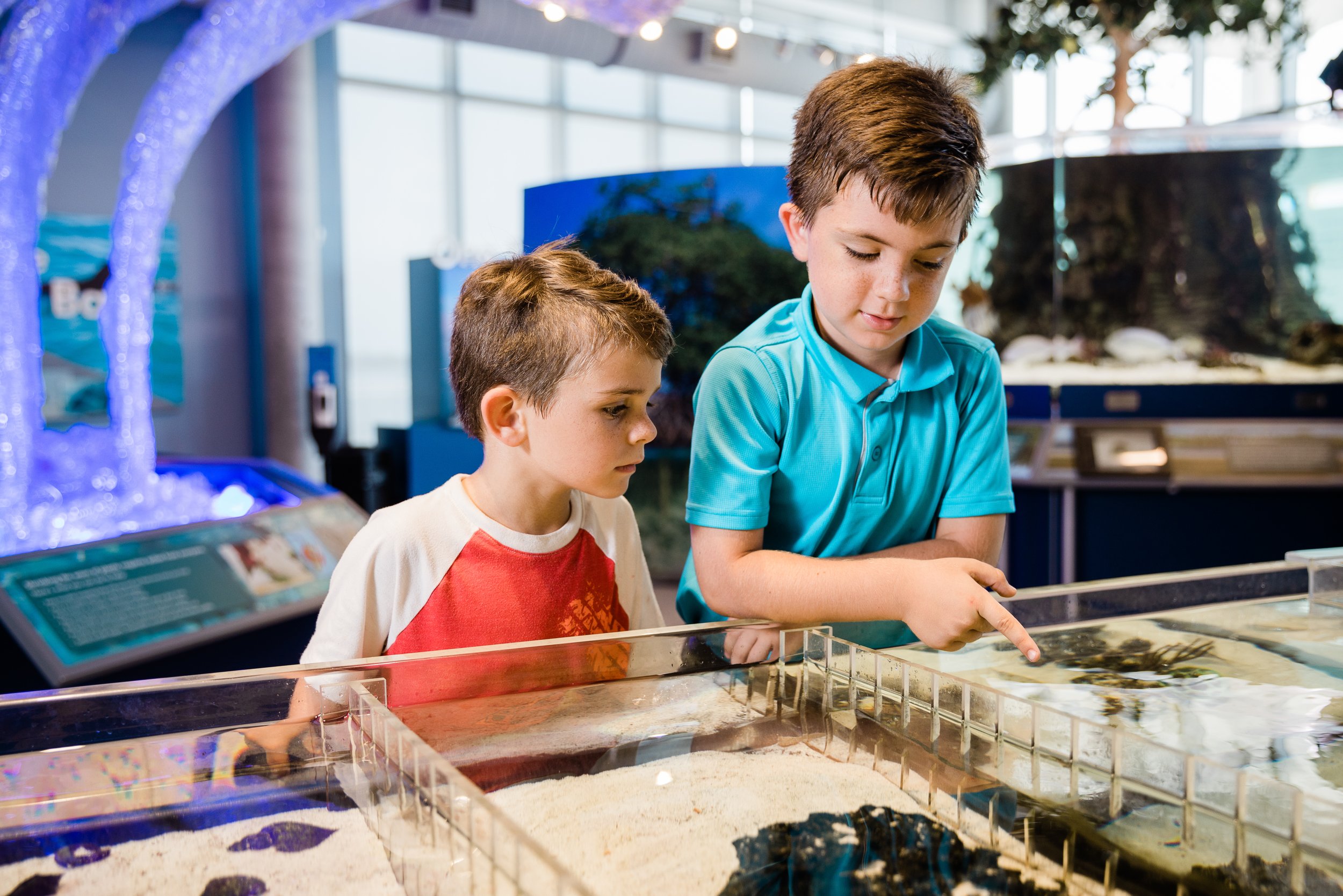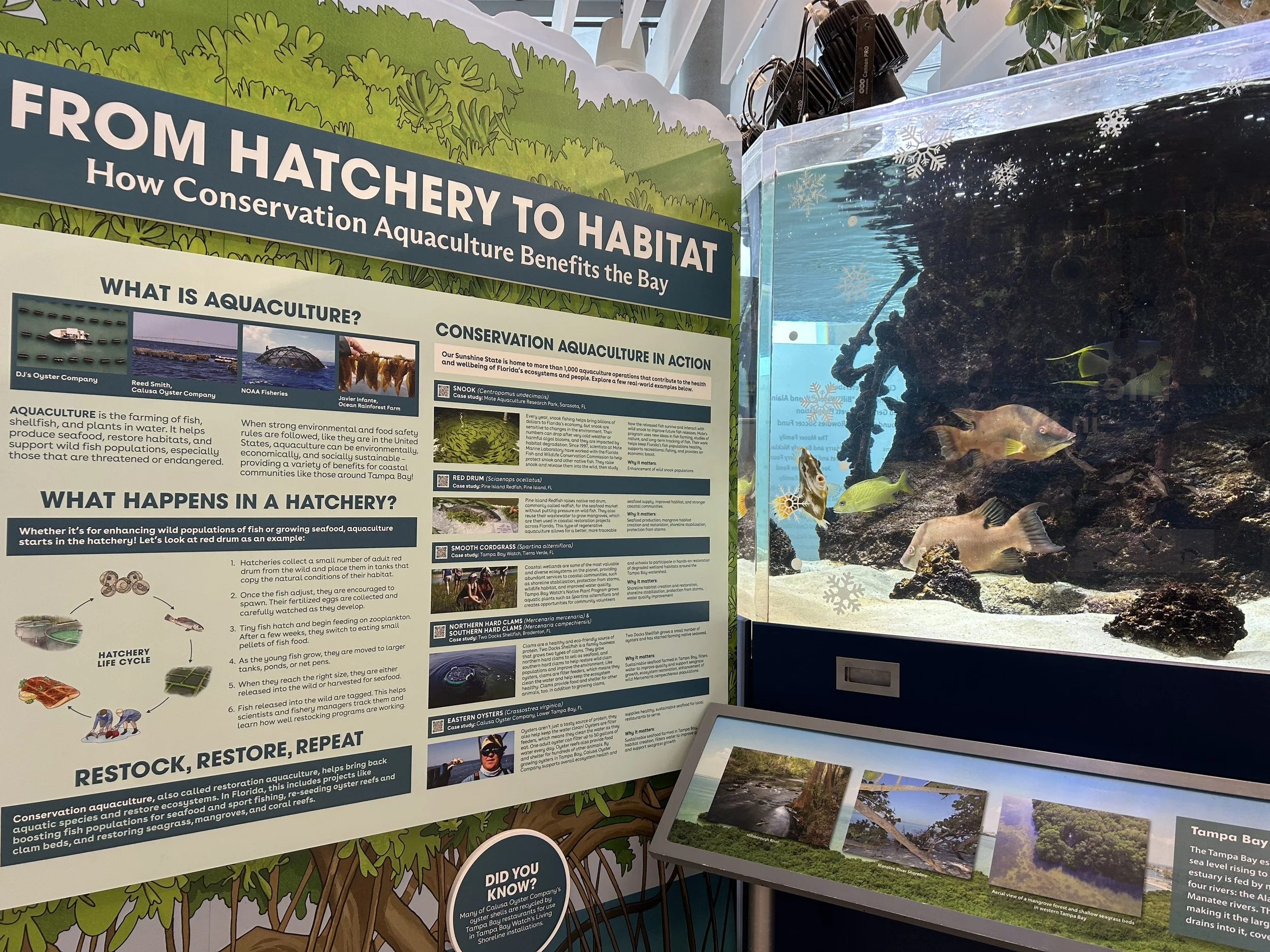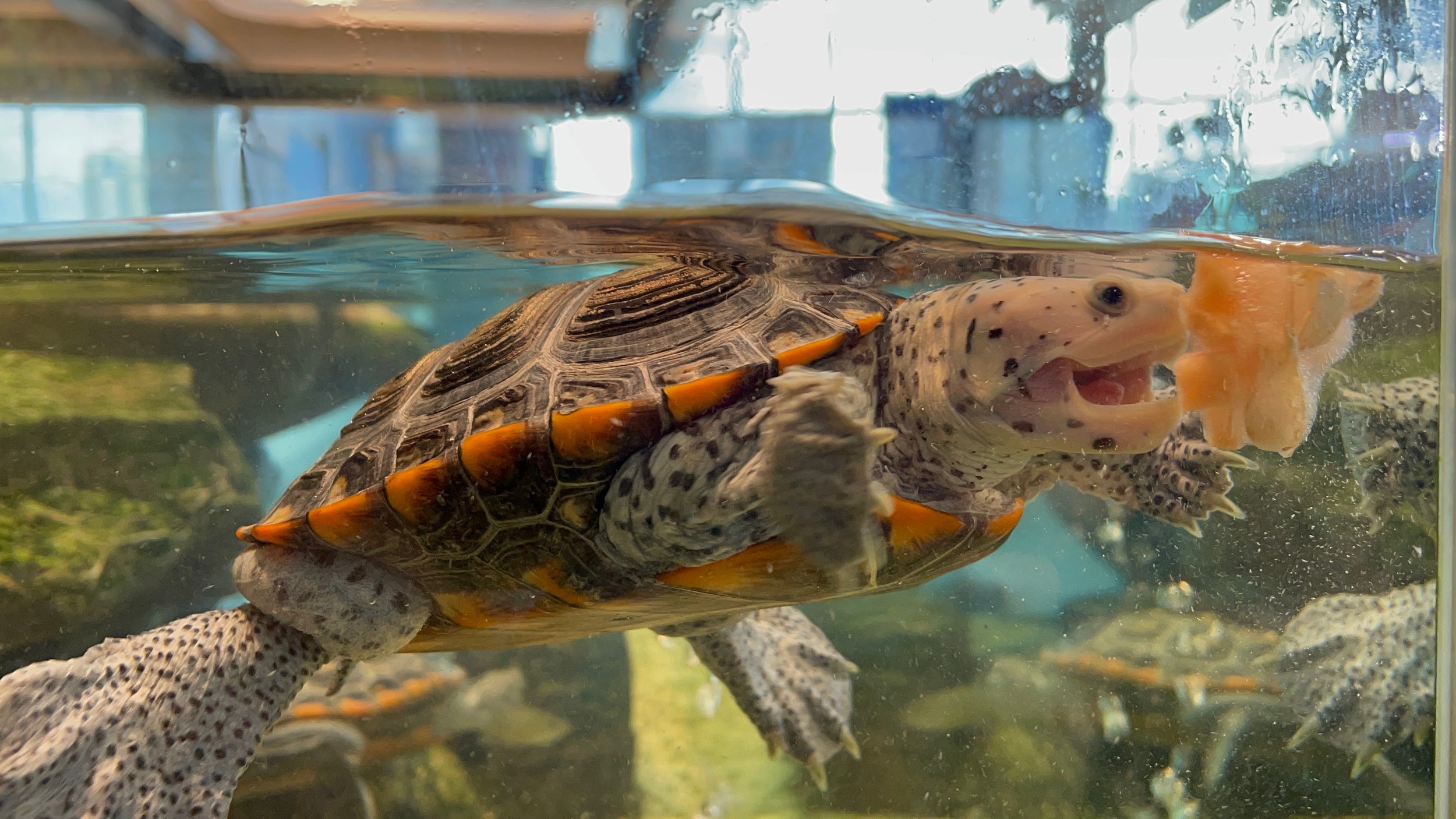
Explore the Exhibit Gallery
Our exhibit gallery showcases the economic and ecological value of the Tampa Bay estuary to residents and visitors. The focal point is a large 1,800 gallon estuary habitat that replicates the living habitat of many of the species found in our local waters. Visitors can also enjoy interactive displays, video presentations, a touch tank, and docent-led talks.
Learn more about our current exhibits below.
From Hatchery to Habitat
Discover how aquaculture can help produce seafood, restore habitats, and support wild fish populations, providing a variety of benefits for coastal communities like those around Tampa Bay. After viewing the display, play our virtual fishing game and test your knowledge by taking an interactive quiz. This exhibit was developed by Tampa Bay Watch, Mote Marine Laboratory & Aquarium, and NOAA, with support from an eeBlue Aquaculture Literacy Mini-Grant.
How’s the Water?
Explore the factors that influence Tampa Bay’s water quality and discover how Tampa Bay Watch is working to protect and restore our vital ecosystem. This engaging exhibit features live plankton samples, an interactive “Ka-Tide-O-Scope,” and practical tips to help you and your loved ones stay safe while enjoying our local waters. Learn how you can make a difference and get involved in preserving the health of Tampa Bay for future generations.
Presented by:
Living Shorelines
This interactive display features engaging elements, a short animated film, and showcases how Tampa Bay Watch's Living Shoreline installations support wildlife and coastal communities. Living Shorelines act as an important barrier, protecting our coastline by absorbing wave energy which ultimately reduces erosion, filters our water, and supports the growth of marine life.
Snakes of the Essstuary
Meet and learn about Florida’s native snakes, how to identify them, and how you can help protect their future. Snakes are often misunderstood, but it turns out they’re not so ssscary!
The Ribbit Exhibit
The Ribbit Exhibit features a variety of live native and nonnative frog and toad species that can be found in Florida. Visitors will discover why native species are important, the dangers of invasive species, and how to tell them apart. Click here to learn more.
Ornate Diamondback Terrapins
Our 240 gallon terrapin exhibit is home to Bertha and Ruby, two rare ornate diamondback terrapins, classified as a vulnerable species. Come meet them and learn how they are different from turtles and tortoises.
The Living Estuary
Estuaries are nicknamed the “nurseries of the sea” because they are prime breeding grounds, providing protection for young fish and other marine life to hide and eat. In Tampa Bay, red mangroves are an essential nursery habitat. Our Living Estuary tank showcases some of the species that depend on these unique, salt-tolerant trees.
Tampa Bay: Past and Present
Our interactive spin browser highlights the history of development, destruction, and restoration in Tampa Bay. Learn how our estuary ecosystem has changed over time and find out about Tampa Bay Watch’s past and present work to protect it.
Life in a Water Drop
Discover the many microscopic organisms drifting in Tampa Bay! Our estuary is full of phytoplankton and zooplankton. Peer through our microscopes to view familiar organisms, such as sea stars, in their earliest floating phases of life. Live plankton samples are collected and shared daily.
The Handmade Map
Can you find your home on our critically detailed, laser-cut birchwood map of Tampa Bay? This work of art by cartographer Dean Forss makes it easy to understand the layout of the bay and the locations of Tampa Bay Watch’s many restoration projects.
Tampa Bay Touch Tank
Our touch tank features some of the local marine life you can find in Tampa Bay. Stop by to learn about and interact with sea stars, sea urchins, hermit crabs, horseshoe crabs, live shells, and more. It’s fun for all ages.
Project Seahorse
Seahorses are an important indicator species, meaning their presence can tell us about the current health of the bay. View live seahorses (and some of their close relatives) in our seahorse tank, and find out how Tampa Bay Watch’s restoration work and research is helping the local seahorse population grow!
Sandbox Scavenger Hunt
Dig in our sandbox and learn how to identify some of our regions most mysterious but common beach finds! This exhibit is a favorite among young visitors.
Beautiful Invaders
An invasive species is an organism that causes ecological or economic harm in a new environment where it is not native. Lionfish arrived in Florida more than 25 years ago via the aquarium trade. These ornate Indo-Pacific fish are voracious predators that reproduce quickly, and they are having detrimental effects on our ecosystem. View our live lionfish, which were caught locally, and find out what’s being done about these damaging invaders. We also offer lionfish dissections weekly!
















